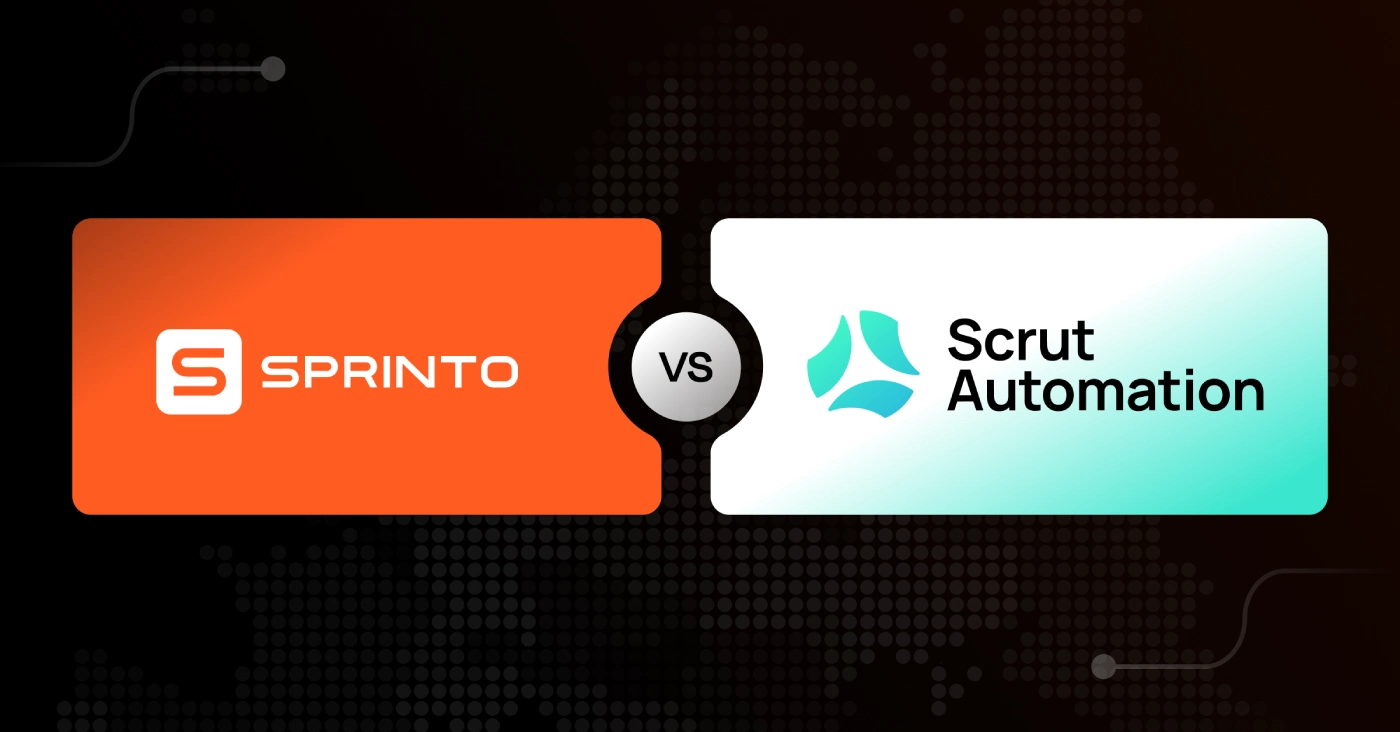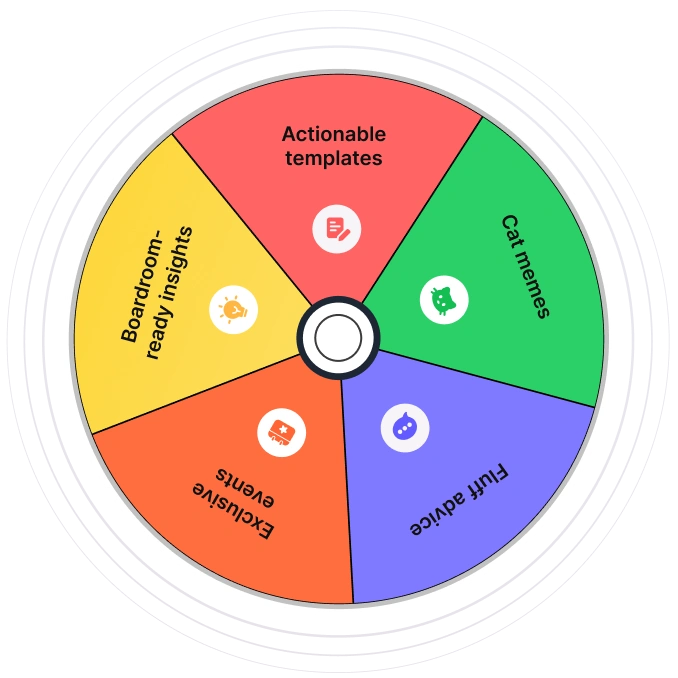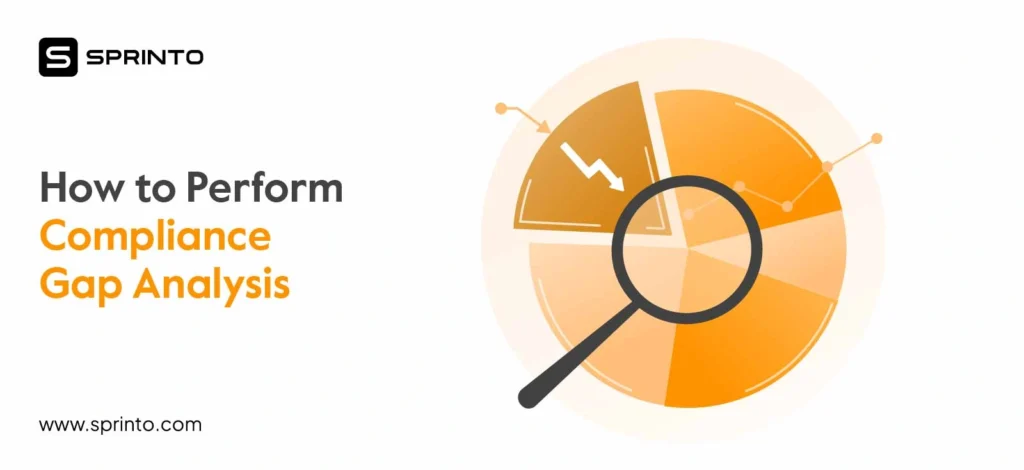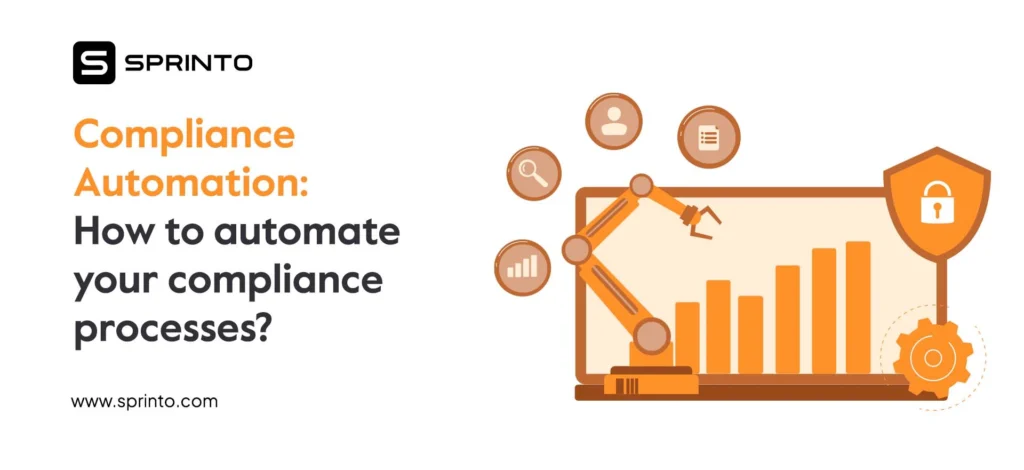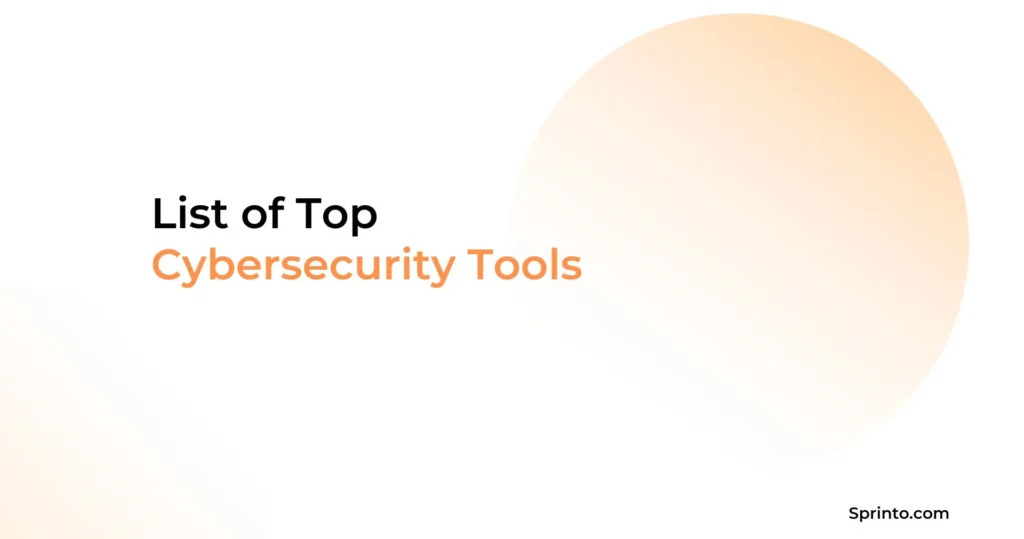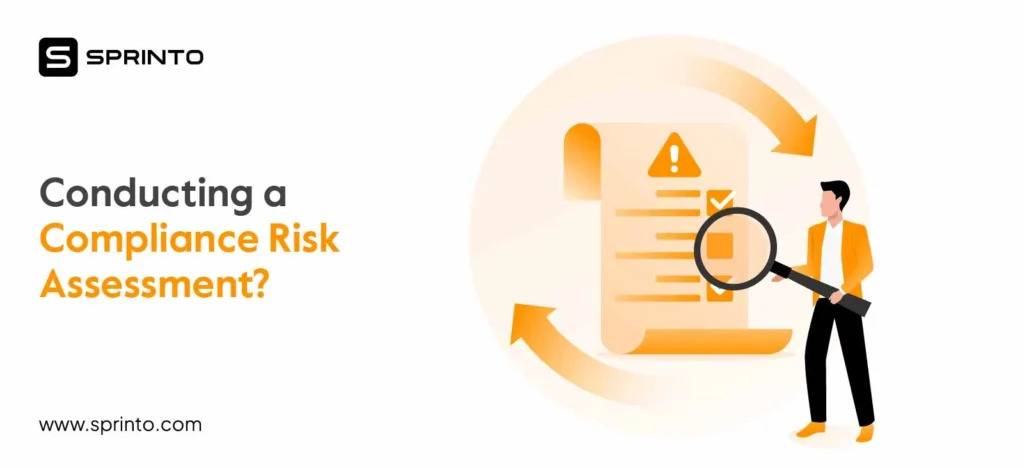Compliance used to be something teams dealt with in the background. Now, it shows up everywhere—during sales calls, security reviews, vendor questionnaires, and investor check-ins. The stakes are higher, timelines are tighter, and the margin for error is smaller.
So if you’re searching “Sprinto vs. Scrut,” you are not just comparing tools but looking for solutions that claim to make compliance scalable, painless, and fast-moving.
Sprinto and Scrut are two names that come up often in this conversation. And for good reason. Both platforms offer security compliance automation and risk monitoring.
Scrut, for instance, earned G2’s momentum leader badge for winter 2025. On the other hand, Sprinto was recognized by G2 as one of 2025’s top 50 software products in GRC.
But which one fits you best?
That’s what we’ll help you decide in this article. We’ll break down their capabilities, contrast key features, explore support, and more—so you’re equipped to choose the right compliance partner.
Sprinto: An overview
Sprinto is a compliance automation platform built for cloud and tech companies that want to move fast without security becoming a roadblock.
It brings together risk monitoring, control enforcement, evidence collection, and audit management—without the clutter of spreadsheets or manual coordination.
Whether you’re working towards SOC 2, ISO 27001, GDPR, HIPAA, or CMMC 2.0 (or all of them at once), Sprinto lets you automate your compliance journey from start to finish for 30+ frameworks.
It stands out in how it blends automation with expert-led support. From the moment you sign up, a dedicated compliance team helps you scope your program, implement best-fit controls, and prepare for audits.
The platform plugs into your cloud setup, runs continuous control checks, and gives you a real-time view of your compliance health.
Sprinto use cases
1. When you need to get compliant fast—no guesswork, no spreadsheets
Startups often land in a spot where they need SOC 2 or ISO 27001 yesterday! Sprinto helps you get audit-ready without the chaos and fast.
You get clear next steps, mapped controls, and pre-built policies—all matched to your setup.
Sprinto’s strength lies in its automation prowess which is ensured by responsive native integrations and Dev API. That is why all the heavy lifting (like collecting evidence) happens in the background while you stay focused on your mission critical tasks.
2. When you’re looking for feature depth and not surface-level fixes
Unlike most tools that are good for getting started, Sprinto is built with depth and breadth. It has all essentials for maintaining and proving compliance with various frameworks, both standard and custom minimizing the need for external tools unless for highly specific/sophisticated capabilities.
3. When you’re juggling multiple frameworks and don’t want to do everything from scratch
You might start with SOC 2 but soon need GDPR, HIPAA, or ISO layered on.
Sprinto solves this with common control mapping. It helps you map shared controls, reuse evidence, and build once for multiple frameworks. This means there’s less context switching, fewer tasks and no last-minute scrambling.
4. When you want all stakeholders on the same page
Legal, HR, engineering—everyone plays a part in compliance.
Sprinto keeps the entire process centralized with transparency built-in, so you don’t have to chase down approvals, updates, or screenshots across functions.
Everything’s logged, assigned, and visible to key stakeholders at a single place. A tiered notification system ensures the right people are nudged at the right time, minimizing the back and forth.
5. When you don’t have an internal compliance expert
Not every team has a security or compliance lead. In fact, most small businesses don’t.
Sprinto is more than a software — it’s a partner. It comes with a team of experts who guide you through every step.
With >60% of the support team certified in cybersecurity and compliance, and the fastest FTR in the industry (25 mins median), Sprinto delivers hands-on, white-glove support. From setup to audit prep, you get expert guidance tailored to your environment and goals.
It’s a game-changer when time and expertise are in short supply.
One place for managing everything compliance
Who is Sprinto built for?
Sprinto is built for modern, cloud-native companies that operate in regulated industries or handle sensitive customer data.
Its customers typically include fast-growing startups and mid-sized businesses in SaaS, fintech, healthtech, and AI.
These are teams that need to demonstrate compliance early—whether to close enterprise deals, meet regulatory expectations, or scale into new markets—without hiring large security or compliance teams.
Sprinto supports both first-time adopters and teams managing multiple frameworks across global operations.
Scrut: An overview
Scrut is a GRC tool that helps teams manage compliance, risk, and security workflows in one place. It replaces manual processes like tracking audit evidence, reviewing vendor risks, and running access reviews.
The platform supports frameworks such as SOC 2, ISO 27001, GDPR, HIPAA, and PCI DSS. It includes modules for policy management, training, risk assessments, and more.
Scrut brings structure and standardization to compliance efforts, while offering flexibility through integrations and customizable controls.
It also supports internal risk programs and allows teams to map risks to systems, vendors, or business units for better cross-functional tracking.
Its modular design means teams can start with a focused set of features and expand based on evolving needs.
Scrut use cases
1. When compliance efforts are scattered across tools and teams
A lot of companies use Scrut to bring some order to their GRC chaos.
Vendor spreadsheets live in one folder, risk logs in another, audit docs somewhere else. Scrut acts as a central coordination layer where these activities can be run and tracked together, under structured workflows.
That said users report that automation is limited adding overheads as compliance efforts scale.
The Apty case study will help you understand the case in point:
2. When you’re running internal risk programs
Scrut lets you define risks, tag systems or vendors involved, and assign follow-up actions.
For teams with internal infosec or GRC functions, this makes it easier to manage risk registers and tie them back to control gaps across frameworks.
3. When audit season needs tighter coordination
Some companies have multiple audits happening at once. Or they work with different consultants and assessors.
Scrut helps streamline that mess. You can loop in external auditors, organize evidence, and avoid long email threads and back-and-forths.
4. When infosec tools are already in place
Scrut isn’t just for audits. It also offers modules like CSPM, access reviews, and employee training. For orgs already doing this in pieces, Scrut brings it together in one place.
However, teams may need to rely on other tools because some in-built features and modules are missing.
Who is Scrut built for? Its target customers
Scrut is often chosen by mid-sized SaaS, fintech, or healthtech companies that already have some structure around compliance and want to bring risk, vendor, and audit workflows into one place.
It’s designed to support internal GRC teams and offers flexibility through modular features.
That said, some parts of the platform may require more configuration, making it a better fit for teams that are already comfortable navigating compliance tools and frameworks.
Sprinto vs. Scrut: Detailed feature comparison
Sprinto and Scrut both support a broad set of features across compliance, risk, and audit workflows.
On paper, they check many of the same boxes, like compliance automation, control monitoring, risk management, audit readiness, and so on.
But how they execute on each of those fronts is where the differences really show up.
| Feature | Sprinto | Scrut |
| Compliance Automation | Extensive automation across workflows, evidence, and tasks | Automation supported across evidence, tasks, and controls |
| Frameworks Supported | 30+ frameworks supported | 20+ frameworks supported |
| Continuous Control Monitoring | Yes | Yes |
| Automated Evidence Collection | 200+ integrations, high automation coverage | 70+ integrations, automated evidence collection |
| Risk Assessment | Qualitative + quantitative, with remediation workflows | Qualitative + quantitative, with treatment planning and scoring |
| Vendor Risk Management (VRM) | Integrated module with risk assessment, discovery, and breach alerts | Automated assessments, risk scoring, and tracking (manual discovery) |
| Audit Management | End-to-end audit module with async audits, auditor access | Invite auditors, manage audits in-platform, real-time collaboration |
| Security Training | Built-in, framework-aligned training modules with completion tracking | Employee Awareness module with training, assessments, and scoring |
| Policy Management | Pre-built + custom policy templates, versioning, attestation | Policy upload, tracking, version control |
| Device Management (MDM) | Built-in lightweight MDM (Dr. Sprinto) + integrations | Integrates with Kandji, Intune, Jamf, etc. |
| Zones (Multi-org compliance) | “Zones” feature to segment compliance by BU, geo, or product | No native segmentation or zone management |
| Audit Collaboration | Auditors work inside platform, async evidence review | Auditors invited into platform, real-time updates |
| Onboarding-Offboarding Automation | Linked to HRMS/IDPs, automated task triggers and tracking | Workflow support for onboarding/offboarding + access checks |
| Coverage for Complex Orgs | Built for scaling across multi-product or multi-region setups | Multi-framework support; limited built-in segmentation capabilities |
Let’s break down the most important features and see how each tool stacks up:
1. Audit readiness & auditor collaboration
Sprinto offers full audit lifecycle support—from control testing and evidence prep to real-time collaboration with auditors inside the platform. You can run fully asynchronous audits, grant access to external auditors, and track everything in one place.
Scrut allows companies to invite auditors into the platform to view evidence, request clarifications, and manage tasks — eliminating email threads and spreadsheet exports. It supports multi-framework audits and centralizes documentation.
Verdict: Both support modern audit workflows. Sprinto gives more flexibility for async audits and ongoing readiness; Scrut covers core audit collaboration well for its key frameworks.
2. Compliance automation
Sprinto automates control monitoring, evidence collection, policy enforcement, and audit prep. It plugs into 200+ systems, and most of its workflows run in the background with minimal human input.
Customers typically don’t need to stitch together separate tools or run scripts for automation.
Scrut also automates compliance workflows, including evidence gathering, control checks, and task assignment, through integrations across cloud providers, HRMS, IT, and productivity tools. Frameworks like SOC 2, ISO 27001, PCI DSS, HIPAA, and GDPR are supported with automation across core workflows.
Verdict: Both offer strong automation. Sprinto may be better if you need broader coverage and more plug-and-play setup, but Scrut holds up well within its supported scope.
3. Security training
Sprinto comes with built-in, framework-aligned security awareness training. You can assign modules to employees, track completion, and automatically log acknowledgments for audit purposes. It also supports third-party integrations if you’re using external training platforms.
Scrut also offers a dedicated Employee Awareness module, which includes training content, session tracking, automated enrollment, and performance assessments. It ties directly into compliance tracking as part of the broader GRC workflow.
Verdict: Both platforms offer built-in training. No clear edge here. You can choose based on UI, customization needs, or whether you’re already using a third-party tool.
4. Vendor risk management (VRM)
Sprinto automates vendor discovery through system integrations (e.g., SSO), flags vendor risk based on classifications, and offers breach alerts + compliance mapping.
You can assign review cycles and store security docs centrally. It also helps with automated security questionnaires for vendors and offers AI-powered due diligence.
Scrut supports vendor onboarding, risk assessments, automated questionnaires, scoring, and audit documentation.
While vendor discovery isn’t automatic, the module covers the entire lifecycle with automation around reviews and approvals.
Verdict: Sprinto has the edge on auto-discovery and external intelligence. Scrut wins on structured reviews and automation depth. Consider which step of the vendor lifecycle matters more to you.
5. Risk management
Sprinto offers quantitative risk assessments, and maps risks directly to controls. It has an in-built risk library that helps you scope out risks unique to your business and lets you accept, mitigate, transfer or reject risk as per preferences. You can assign risk owners and initiate role-based remediation while continuously monitoring risks and controls.
Scrut has a structured risk module with quantifiable risk scores, continuous risk monitoring, risk treatment plans, and ownership assignments. It covers operational, vendor, and technical risk types, and it ties them to broader GRC workflows.
Verdict: Comparable capabilities. Sprinto ties risk closer to control enforcement; Scrut leans into structured planning and assessment. The choice depends on how tightly you want risks linked to automation.
6. Access reviews and lifecycle events
Sprinto automates periodic access reviews, flags access violations, and lets you set up onboarding-offboarding workflows tied to identity providers. It supports system-level integrations and audit logging for role changes, exceptions, and acknowledgments.
Scrut has an access reviews module. You can automate recurring reviews, assign reviewers, send notifications, and monitor access risks across systems. It also supports automated access validation for new hires and departing employees.
Verdict: Feature parity is strong here. Sprinto’s focus is tighter integration with identity and HR tools. Scrut offers robust workflows and access insights at scale.
7. Change management
Sprinto connects with Git, Jira, and CI/CD tools to track code and infra changes, link them to audit windows, and enforce approval trails.
This helps satisfy change control requirements under frameworks like ISO 27001 or FedRAMP.
Scrut integrates with code repositories and CI/CD systems. It supports tagging, tracking, and task workflows.
However, detailed change logs tied to compliance approvals aren’t as deeply built into audit trails.
Verdict: Sprinto leads here if you need traceability and automated control coverage for changes. Scrut covers the basics but may feel like it doesn’t go as deep into audit mapping.
8. Device management (MDM) and visibility
Sprinto includes its own lightweight MDM—Dr. Sprinto—which checks whether devices meet compliance standards (disk encryption, screen lock, etc.).
It also integrates with other MDM platforms and maintains device compliance logs.
Scrut integrates with MDM tools like Kandji, Intune, Jamf, Rippling, and more. It pulls in device status and helps track compliance posture across teams.
Verdict: Scrut relies on integrations. Sprinto gives you native visibility out of the box. Sprinto may suit leaner teams without a formal MDM setup.
9. Compliance by Zones
Sprinto enables entity-level compliance management through its Zones feature.
Teams can create isolated compliance scopes for different business units, product lines, or geographies—all managed under a single, centralized dashboard.
Scrut supports multiple frameworks and audits in parallel, but doesn’t offer native separation by org or product line within a single account.
Verdict: Sprinto is more suitable for companies with multiple audit scopes or distributed teams. Scrut works well for single-entity compliance, but may require separate accounts for more complex orgs.
Sprinto vs. Scrut: Pricing and Value
Both Sprinto and Scrut follow a custom pricing model.
You’ll need to request a demo to get a tailored quote based on your size, frameworks, and requirements.
In terms of their overall value, it depends on what you’re solving for.
Sprinto reduces internal effort with faster setup, built-in automation, and guided support—making it a strong fit for teams that want to move quickly without adding operational overhead.
Scrut offers flexibility through its modular approach, which can suit teams that prefer configuring their own workflows.
Both tools bring enterprise-grade capabilities. What delivers more value will depend on your team’s internal structure and how hands-on you want to be.
Sprinto and Scrut: Pros and cons
Pros and cons of Sprinto
| Pros | Cons |
| Gets teams audit-ready quickly, even without a compliance background | Doesn’t offer à la carte module selection; you adopt the whole platform |
| Offers a structured experience that feels guided rather than DIY | Heavy automation might feel opaque to teams who prefer manual oversight |
| Automation works quietly in the background, reducing checklists and manual chasing | |
| Especially helpful for lean teams juggling growth and compliance | |
| Dedicated support from compliance experts throughout onboarding and audits |
Pros and cons of Scrut
| Pros | Cons |
| Modular setup allows teams to adopt features at their own pace | May take more effort to configure and maintain if you’re starting from scratch |
| Covers a broad spectrum of GRC workflows under one roof | Some workflows assume internal compliance maturity |
| Helpful for companies already running structured internal audits or risk programs | Certain features (like vendor discovery or change tracking) may need manual handling or third-party tooling |
Which compliance software to choose: Sprinto or Scrut?
Choosing between Sprinto and Scrut comes down to how your team works, where you are in your compliance journey, and what kind of support you expect.
Here are a few things to weigh as you decide:
- Team size and bandwidth: Consider whether your team has the resources to manage compliance internally or would benefit from a platform that handles more of the process for you
- Compliance urgency: Think about how soon you need to be audit-ready and how much time your team can realistically commit to setup and coordination
- In-house expertise: Factor in whether you have someone on the team who understands frameworks and requirements, or if you’d need the tool to provide more hand-holding
- Frameworks in scope: Look at the number and type of frameworks you need to manage. Some platforms may be more optimized for certain standards than others.
- Preferred level of control: Decide if you want to configure workflows and controls yourself or prefer a pre-defined path that’s ready to use
- Vendor and risk complexity: Evaluate how complex your vendor ecosystem or risk environment is, and whether the platform gives you enough visibility and control in those areas
- Customer support and involvement: Assess how much ongoing support you expect during onboarding and audits, and whether the platform offers dedicated guidance or a more hands-off experience.
Why Sprinto is a better choice?
If you want to get compliant fast without dragging your team into spreadsheets and scattered tools, Sprinto is worth a serious look.
With Sprinto, you get deep automation across controls, evidence, and monitoring—plus built-in workflows that help you stay audit-ready year-round.
Setup is straightforward, even if you’re starting from scratch.
What really sets Sprinto apart is the support.
Every account comes with a dedicated compliance expert who helps you scope, implement, and pass audits with confidence. You’re not just using software; you’re working with a team that knows what it takes.
For fast-moving cloud companies, Sprinto offers the right mix of clarity, speed, and hands-on guidance.
Sprinto is the top choice for cloud-first companies
Frequently Asked Questions
What’s a good Scrut alternative?
If you’re looking for a Scrut alternative that’s easier to set up and offers more guided support, Sprinto is a highly popular choice. It’s especially useful for lean teams that want to automate compliance and move quickly without building everything from scratch.
Which GRC tool offers the best automation?
Sprinto offers end-to-end automation across key compliance workflows. It handles evidence collection, control checks, and audit readiness through integrations with cloud, HR, and IT systems. Most processes run in the background, reducing manual effort and limiting the need for spreadsheet tracking or follow-ups.
This level of automation is especially useful for teams managing multiple frameworks or working with limited internal resources.
What should I consider when choosing between Sprinto and Scrut?
Think about your team size, timeline, and how hands-on you want to be.
Sprinto fits teams that want a faster setup with strong support and automation out of the box. Scrut gives you flexibility with modules, but may take more internal effort to configure and run.
Consider your needs and use cases, analyze the Sprinto and Scrut reviews, and choose a compliance software accordingly.
Payal Wadhwa
Payal is your friendly neighborhood compliance whiz who is also ISC2 certified! She turns perplexing compliance lingo into actionable advice about keeping your digital business safe and savvy. When she isn’t saving virtual worlds, she’s penning down poetic musings or lighting up local open mics. Cyber savvy by day, poet by night!
Explore more
research & insights curated to help you earn a seat at the table.



